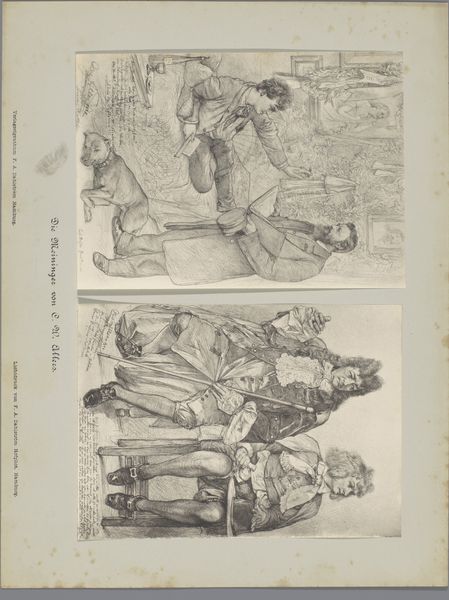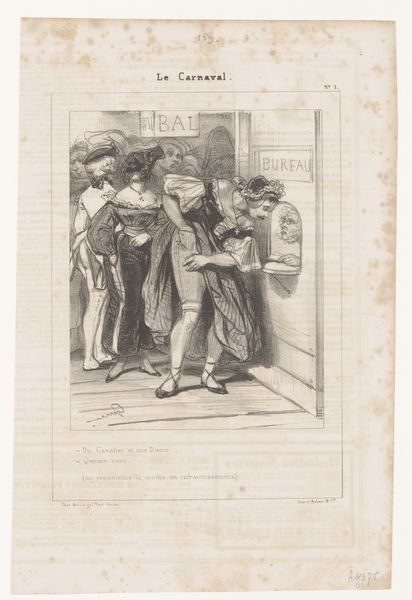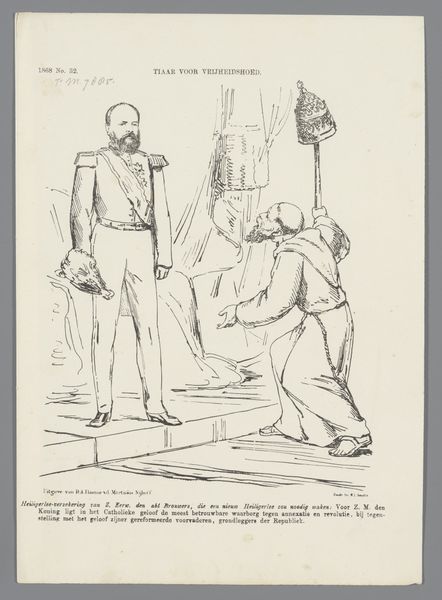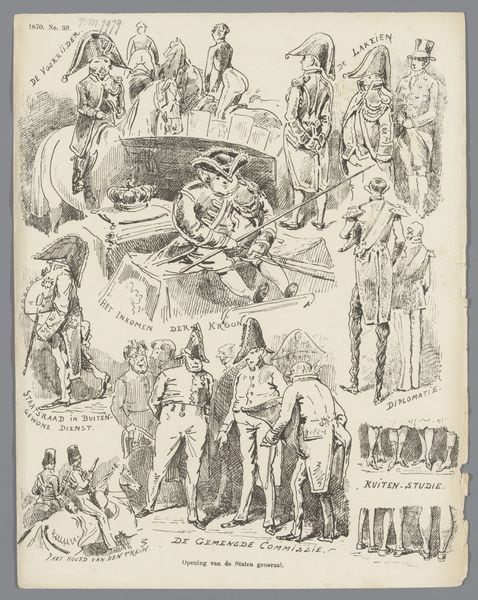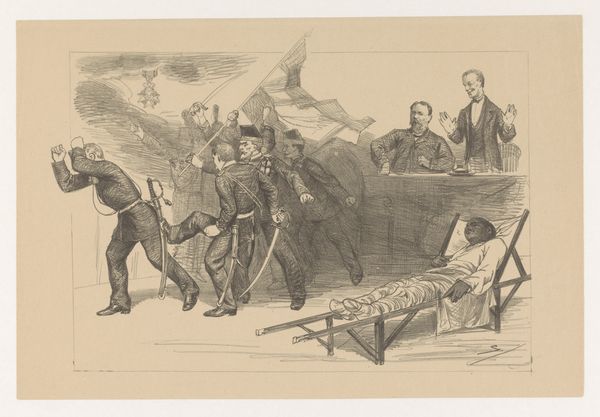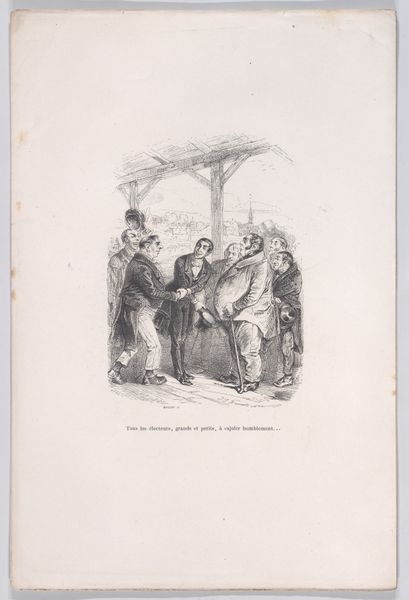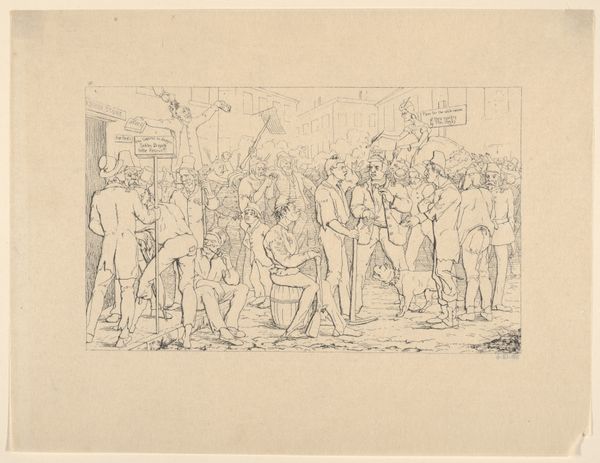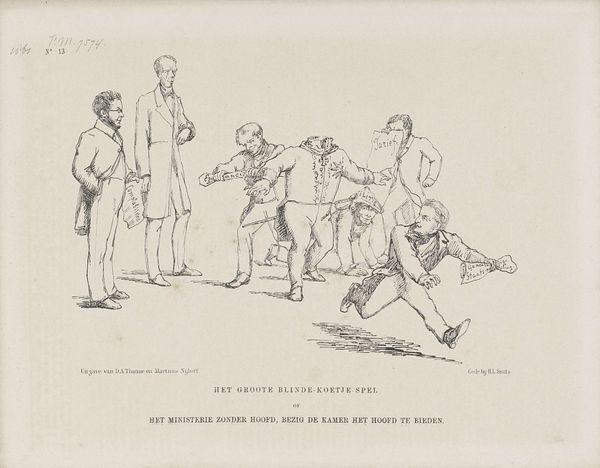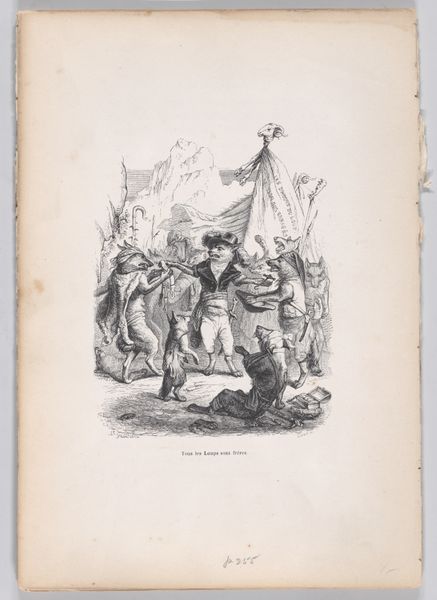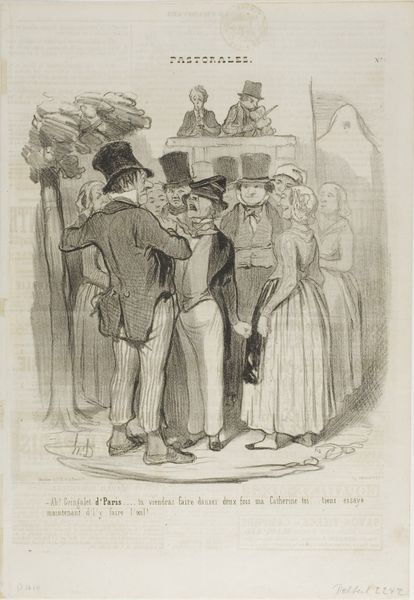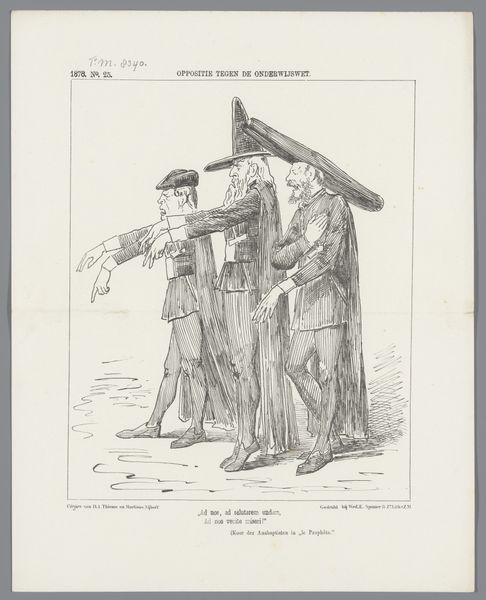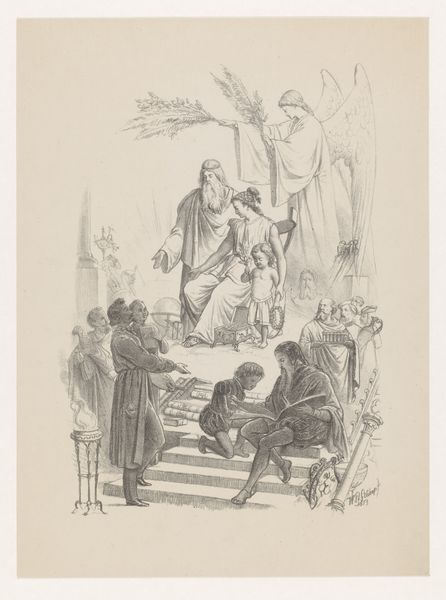
Fotoreproductie van een tekening, voorstellende Ludwig Chronegk leidt de generale repetitie van het toneelstuk Julius Caesar 1890
0:00
0:00
drawing, pencil
#
portrait
#
drawing
#
pencil
#
genre-painting
#
academic-art
Dimensions: height 241 mm, width 172 mm
Copyright: Rijks Museum: Open Domain
Curator: This is a reproduction of a drawing from 1890 by F.A. Dahlström, depicting Ludwig Chronegk leading a rehearsal of Julius Caesar. It's rendered in pencil. Editor: My first thought? A sense of contained chaos. There's such detail packed in, all rendered in gray tones that feel both serious and fleeting. What are your thoughts about it as a material object? Curator: What interests me is how it reflects power structures in theater and broader society at the time. Chronegk, standing elevated, bell in hand, directs a Roman army, alluding to imperial themes and raising interesting questions of cultural appropriation in theatre. Editor: Precisely. It seems the production's means were extensive--those elaborate Roman costumes didn't materialize out of thin air. Consider also, that this "drawing" is itself a "fotoreproductie," which creates another remove in the production process. Curator: I agree; these themes extend beyond stagecraft. This scene evokes ideas of leadership and performative authority. The dynamic reminds us that performance has power dynamics embedded in production; who tells the story, and from what perspective? And who gets to create what kinds of narratives, drawing upon historical precedence? Editor: Absolutely. I see that contrast highlighted in the materiality— the delicate pencil lines capturing these bombastic figures, but also suggesting an instability inherent in such performative acts. The costumes themselves, carefully constructed through intense labor, exist for one purpose – illusion. Curator: Right. The work’s meticulousness shows an interesting focus on production value in art and theatre. In what way did Dahlström perceive the creative, or reproductive labor here, if at all? Editor: He definitely elevates what would ordinarily be deemed support roles--tailors, carpenters, set designers, etc. As this drawing shows, their contribution shapes not just what we see, but ultimately what is felt and understood. It makes us consider art beyond the artist. Curator: Indeed. Thinking through its many layered contexts enriches our understanding, right to the modern reproductions in museums that let more people view it! Editor: Definitely; it moves us to consider value in these social and theatrical constructions that we have, still.
Comments
No comments
Be the first to comment and join the conversation on the ultimate creative platform.
